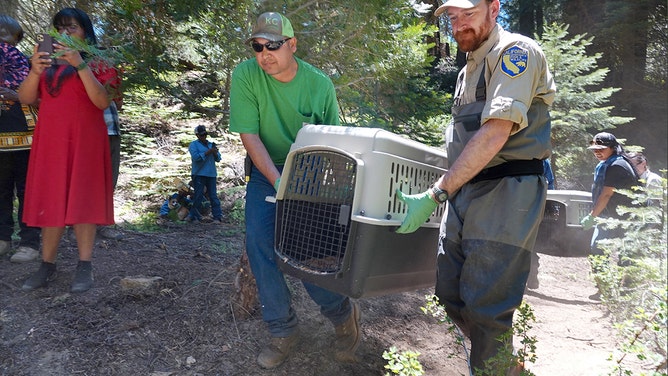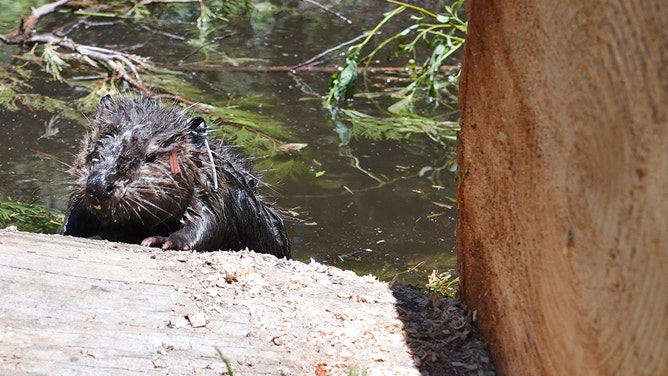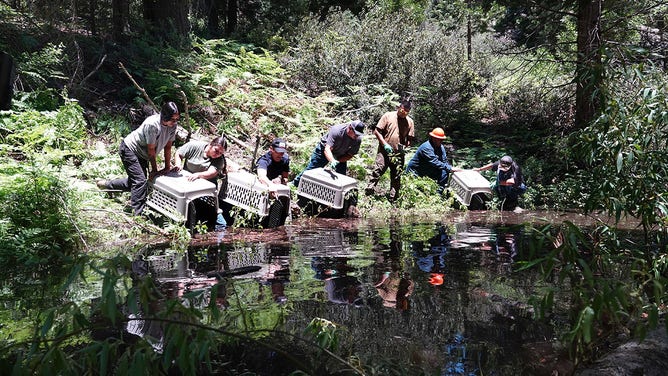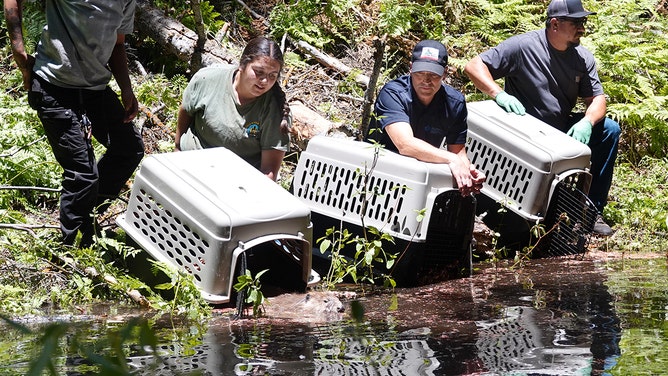Beavers return to California tribe land after decades of disappearance in effort to bring water to land
“We can make our future different from our past," CDFW Director Charlton H. Bonham said. “Our past is one where we treated these animals and others as varmints, as nuisances, and our culture over time ran them off the landscape. That can’t be our future."
Beavers are back on Tule River Tribe land in southern Sierra Nevada
A family of seven beavers released into a watershed deep in the southern Sierra Nevada marks a significant milestone in conservation and restoration efforts in the region after years of work by the Tule River Tribe.
TULARE COUNTY, Calif. – A family of seven beavers released into a watershed deep in the southern Sierra Nevada marks a significant milestone in conservation and restoration efforts in the region after years of work by the Tule River Tribe.
California wildlife officials say the beavers' dam-building on the South Fork Tule River is important for the area's ecology and management.

After years of work by the Tule River Tribe, a family of seven beavers has been released into the South Fork Tule River watershed on the Tule River Indian Reservation.
(California Department of Fish and Wildlife)
These dams not only retain water, but also extend seasonal flows, increase summer baseflows and improve drought and wildfire resilience. They also better conserve the tribe’s drinking water supply, with about 80% coming from the Tule River watershed, according to the California Department of Fish and Wildlife (CDFW).
"We’ve been through numerous droughts over the years," said Kenneth McDarment, a Tule River Tribe member and past tribal councilman. "Going through these droughts, we were wondering how we can conserve, save water, get water here on our lands."
The answer was in historical pictographs, estimated to be between 500 and 1,000 years old, McDarment adds. They can be seen at Painted Rock next to the South Fork Tule River on the 55,356-acre reservation.
When tribal elders were young, they recall seeing beavers in the high meadows. However, before this release, beavers hadn't been on the reservation for decades.
"We can make our future different from our past," CDFW Director Charlton H. Bonham said. "Our past is one where we treated these animals and others as varmints, as nuisances, and our culture over time ran them off the landscape. That can’t be our future."

California wildlife officials say the beavers' dam-building on the South Fork Tule River is important for the area's ecology and management.
(California Department of Fish and Wildlife)
Ten years ago, tribal leaders made efforts to reintroduce beavers to the Tule River watershed. With state funding, the CDFW initiated the Beaver Restoration Program in 2022, which focused on reintroducing beavers to the river waters through partnerships with different organizations.
"I’m very happy to see (the beavers) come home, and it’s going to be wonderful to watch them do their thing," McDarment said. "People will be educated even more by seeing the work that they do and the benefits they bring to the environment. My hope is to have the beaver throughout the reservation and all the watershed that we have."
With help from the CDFW, the first release was held June 12 and comprised three adult beavers, one subadult and three "kits." Five days later, two additional beavers were introduced into Miner Creek.
According to the field team's latest report, the beaver family has remained together at the release sites. Further reintroductions are planned to restore a genetically diverse population in the region.



